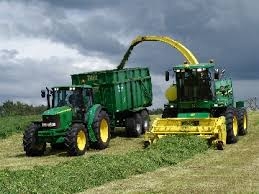
While drizzle and cloudy days ruled the week in the South Island, poor soil moisture continues to rule the spring in the east, although mild temperatures have allowed early grass growth.
Many more irrigators have started to keep pastures growing and those with wells will be hoping they last the distance after little winter recharge.
In the North Island plentiful moisture has caused some problems with harvesting of early silage, and crops shut for more than 40 days will see some deterioration of pasture quality.
Good pasture covers are being reported nationally, with the challenge now to improve body condition scores of cows prior to mating.
Heat detection is also important in the run up to mating, and aids, observation, and tail painting are all being used to ensure cows are cycling again.
While farmers have been encouraged to reduce costs wherever possible to survive the downturn, some costs that drive production and fertility need to be met, or production and profits may suffer.
With low prices for grain and palm kernel, there is no excuse for skinny cows at this time of year, as extra feeding now will give a good return through improved fertility and increased production.
More positive signs from the market, with last week’s auction lifting again on strong Chinese bids, although whole milk powder prices did ease slightly.
European milk production figures showed declines in June while NZ's milk flows were back nearly 5% in August.
Synlait and Fonterra reinforced the market sentiment with both posting big profit lifts, confirming last year’s forecasts, and lifting the 2016/17 predictions to $5 and $5.25 respectively.
Fonterra’s debt has been reduced significantly and Synlait report a $300 million future plant investment plan, to further fuel an increase in dairy farmer confidence.
Cash advance rates have also risen and now nearly all of the processors forecasts are close to breakeven levels to provide some security for farmers under financial stress.
Cow prices have increased with this market improvement with forward sales now over $2000/hd, although easing manufacturing beef prices will reduce returns from cull cows.
Dairy prices
Select chart tabs
3 Comments
Tony, I think the 5% figure for the August production drop is only for Fonterra;
The NZ drop is about 2.7% ( DCANZ stats).
My bet is that NZ September production will be up relative to last year with Southland up considerably ( >5%), Canterbury up a little, and the North Island similar to last year.
These numbers will reflect that last September was real cold across much of NZ.
It will not be until we get October production that we can get a feel for the real effect of decreased cow numbers.
As for Europe, they still seem to be putting SMP into storage rather than taking it out, although that may soon change. But European butter prices are very strong.
Keith
China dairy imports
Chinese dairy import volumes originating from within the EU-28 exceeded volumes originating from within New Zealand for the fifth consecutive month during Aug ’16, accounting for over 40% of total import volumes.
http://www.attenbabler.com/chinese-dairy-imports-update-sep-16/
Tatua CEO suggests caution on Rabobanks comment https://soundcloud.com/nzherald/the-country-jamie-mackay-interviews-pau… (at around 5.49mins)
Rabobank talks up $6 payout http://m.nzherald.co.nz/business/news/article.cfm?c_id=3&objectid=11719…




We welcome your comments below. If you are not already registered, please register to comment.
Remember we welcome robust, respectful and insightful debate. We don't welcome abusive or defamatory comments and will de-register those repeatedly making such comments. Our current comment policy is here.